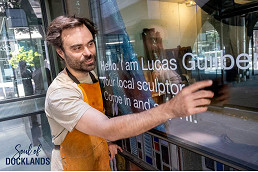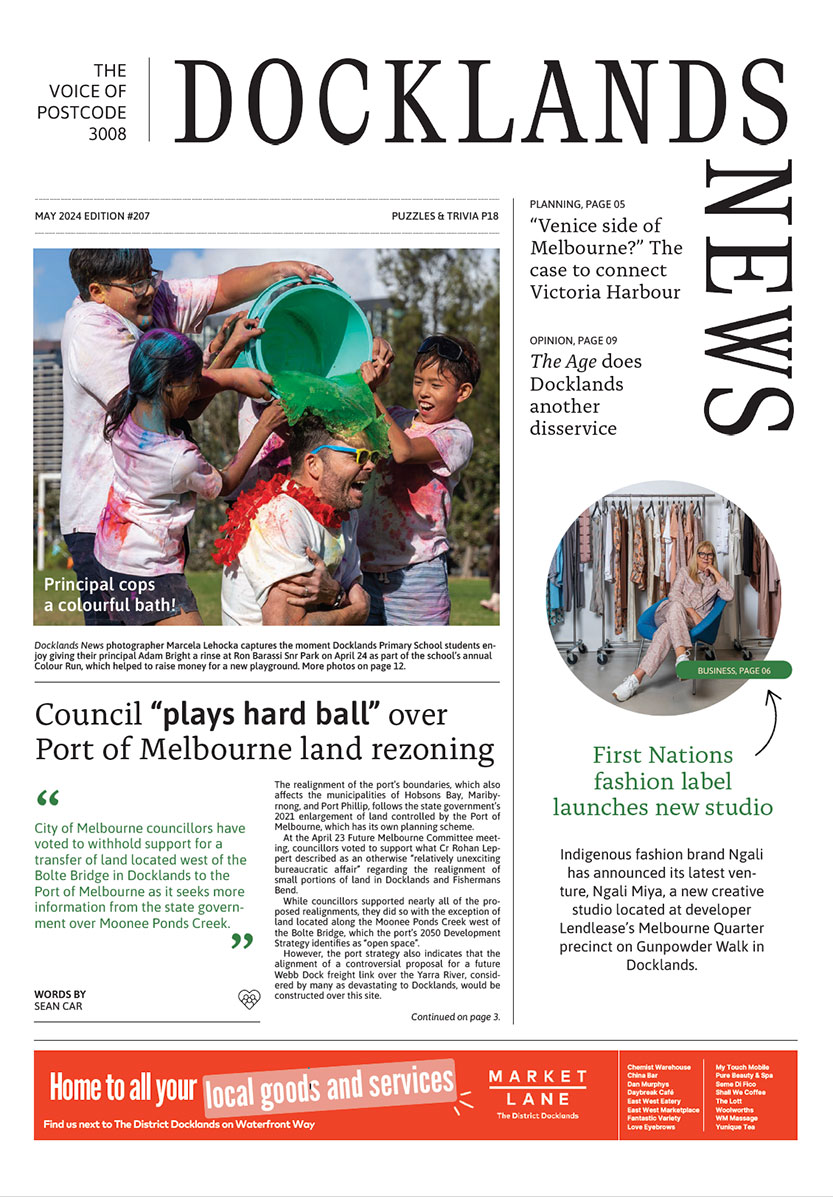Returning to Batman’s Hill
By Tim Martin
Hello again all. My first two columns on the Batman’s Hill precinct aimed to get you out and about and exploring the area, particularly during lockdown when engaging exercise could otherwise be hard to come by.
This month I thought I’d fill you in on how some of the precinct’s street and area names came to be; hopefully you have noted them on your wanderings. Stick around … history isn’t always boring and it’s only a short article.
As a kid I was a fanatical fan of the superhero Batman. I lost count of the number of times my family would be driving over the Batman Bridge in Tasmania and my father would say to me, “No, Tim. It’s not the ‘Bat-Man Bridge’.’ It’s the Batm’n Bridge’”. At that age I would have wet myself with excitement had someone told me I’d one day live in a place call Bat-Man’s Hill!
I’m sure many of you know that the Batman part of the name Batman’s Hill refers not to the superhero but to John Batman who in 1835 travelled from Tasmania to Port Phillip where he negotiated a (controversial) treaty with the local Aboriginals for land which he thought, “would be the place for a village”. He named the land Batmania but it is better known today as Melbourne. The Hill part of the Batman’s Hill name refers to the hill which used to stand in the precinct and on which John Batman’s house was built. There is still a marker for the hill which you can see from the western side of the Melbourne Quarter sales office near the top of the Collins St overpass. Look for a very long pole sticking out of the ground not too far from Bunjil the Eagle; it was actually quite a tall hill. Unsurprisingly Batman’s Hill Drive was also named for the same reasons as the precinct.
Two of the streets around the Village V1 building are named Georgiana St and McCrae St. Georgiana McCrae was a fascinating woman. She was the illegitimate daughter of a marquis who eventually became a portrait painter. She reluctantly married a not very successful lawyer, Andrew McCrae who moved to Melbourne in 1838 where Georgiana followed in 1840. They built a house near the Yarra River where they lived until financial difficulties forced them to move to a pastoral lease near Arthur’s Seat. There they lived very simply with their seven children, and became self-sufficient. Georgiana was well-connected socially and entertained people across a wide social gamut. She also gained a local reputation as a “medicine woman”. When Georgiana and Andrew again suffered financial problems, they split and she returned to Melbourne to rent a house in Latrobe St where she enjoyed an active social life especially in the world of arts and literature. When her father’s wife died, Georgiana had expected a bequest and was shocked to find she’d been left nothing. Georgiana spent a number of years living with her children in various suburbs around Melbourne before she died in 1890 aged 86. Despite the numerous setbacks in her life, she was described as a woman of great courage, personality and ability. Her cottage in Arthurs Seat is now owned by the National Trust.
Moving on, can anyone tell me what a fishplate is? Anyone? It’s a flat piece of metal used to connect adjacent rails in a railway track. Stand on many station platforms and you’ll be able to see one. There were once lots of railway tracks in the area to move goods around between ships, warehouses and so on. Hence the name Fishplate Lane.
Brentani Way is another street adjacent to the Village V1 building and again is named after an interesting character. Charles Brentani was a silversmith who was transported to Australia in 1835 on the ship Aurora as a convict after stealing some silver instead of smithing it. An interesting article on Charles Brentani was published in Docklands News on July 2, 2019 (docklandsnews.com.au/editions/article/the-gold-rush-jeweller_15404/). Briefly, Brentani obtained his freedom in 1841, was central to the discovery of gold in Victoria and became a jeweller, silversmith and gold purchaser operating on Collins St during the gold rush. It was his business that made the original Melbourne Cup. He died a wealthy man in 1853 from alcohol withdrawal; presumably as a result of top shelf tastes.
Not far from Brentani Way is Aurora Lane. The City of Melbourne tells me the lane was named by Vic Urban in 2004 after the Aurora Australis and the Southern Aurora train. I can’t help wondering if that is completely correct given the ship Charles Brentani was transported on was named Aurora. It seems a little too much of a coincidence given the streets’ close proximity. In any case, for those who don’t know, the Aurora Australis is the southern hemisphere version of the Aurora Borealis. Pity you can’t see it from Aurora Lane, although it is visible from Tasmania! The Southern Aurora train was an overnight express passenger train that operated between Melbourne and Sydney between 1962 and 1986.
Lastly, I shall mention Village St. I’m not actually certain where this name came from. I’m guessing it was named around the same time as Aurora Lane, that is 2004. The Village V1 building was opened in 2005 so I’m not sure which came first; the chicken or the egg. Until the land around it was sold due to the GFC, the Village V1 building was supposed to be one of four towers, each connected by a skybridge at the podium level. I understand the idea was that with the laneways and connected buildings sharing facilities, the area was supposed to have a village-like feel to it, which makes me suspect it was the development which led to the street name rather than vice versa. If anyone happens to know the answer, I’d love to hear.
On that note, I shall sign off with a thumbs up to all Docklanders who have done the hard yards in getting us to the point where life is returning to something resembling normalcy. Until next time.

Council “plays hard ball” over Port of Melbourne land rezoning




 Download the Latest Edition
Download the Latest Edition
